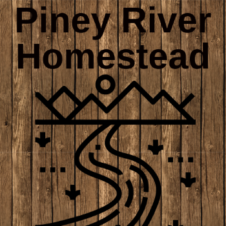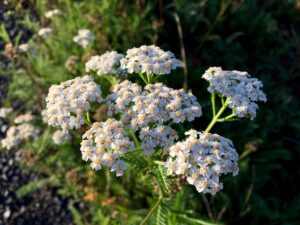If you’re serious about permaculture, there’s one thing you need to know right off the bat—permaculture site analysis is everything. It’s the backbone of any successful design, ensuring your permaculture project aligns with the land’s unique rhythms and quirks. But before you grab your shovel or start planting your food forest, you’ve got to ask yourself… do I really understand this land?
Don’t worry, I’ve got you covered. This guide will take you through everything you need to know about permaculture site analysis. By the end, you’ll be armed with enough knowledge to look at your land with fresh eyes and start designing a space that’s not just sustainable but regenerative.
I. Why is Site Analysis so Important?
Permaculture design is about working with nature, not against it. This means understanding the land’s unique characteristics—its strengths, limitations, and potential. Think of site analysis as detective work.
- What’s been happening on this land before you came along?
- How does the water flow?
- What’s the soil like?
- Where does the sun shine most brightly, and where does the frost linger longest?
Every piece of information helps you build a picture of your land and create a system that thrives in harmony with it.
Remember, permaculture has a philosophy of “observe and interact.” You don’t just show up and start digging. You spend time watching, waiting, and learning. The more you understand, the better your design will be.
II. Get Prepped – Pre-Analysis Checklist
A. Research the Land’s History
Before you even step outside, start digging into the history of your site—figuratively, that is. Has it been farmed? Grazed by livestock? Left wild? Historical records and property deeds are often goldmines of information.
B. Map and Measure
Grab a notebook, draw up a rough sketch, and note down details such as property lines, infrastructure (like fences and roads), and existing land uses. We’re starting to paint the canvas!
Pro tip: Start with a good aerial view—Google Earth can be your best friend.
III. Understand the Physical Landscape
A. The Lay of the Land
You need to figure out your property’s topography. Where are the hills? The valleys? The flat planes? Knowing this helps you understand water flow, sun exposure, and potential challenges like soil erosion. A physical map or elevation chart can be super helpful here.
B. What’s Beneath Your Feet?
Now onto soil. If you don’t know what that dirt can handle, your plants are doomed.
- Texture and structure: Is it sandy, clayey, or loamy?
- pH levels: Acidic or alkaline?
- Drainage: How quickly does water seep in?
Even an at-home soil test kit can give you tons of information!
IV. Climate – The Big Picture
Climate is a huge factor in deciding what will thrive on your land.
- Macroclimate: What’s the general weather in your region?
- Microclimate: And what’s unique about this space? Maybe your backyard has a frost pocket, or your south-facing wall gets toasty warm in winter.
Keep track of rainfall, wind directions, seasonal temps, and frost dates. This isn’t just nerdy data—it’s what will make or break your yields.
V. Water, Water Everywhere (and Not a Drop to Waste!)
Water is life, and permaculture champions using every drop wisely.
- Map out water sources—wells, streams, ponds.
- Observe how water flows across your land after rainfall.
- Is your water quality good to sustain plants or consume?
Understanding your watershed lays the foundation for managing drainage, reducing erosion, and maximizing retention.
VI. Nature’s Symphony – Biology and Ecosystems
Your site doesn’t stop at soil and water—there’s already life humming away.
A. Flora and Fauna
What plants and critters already call your land home? List native species, trees, shrubs, and wild grasses. Keep an eye on invasive species too—they may need managing.
B. Hidden Helpers
Don’t forget pollinators (bees, butterflies, birds) and soil-dwelling creatures (hello, earthworms!). They’re your free labor for a thriving ecosystem.
VII. The Role of Humans
Uh-oh. Turns out that cute veggie patch spot is next to a noisy road? Maybe your neighbor’s land use impacts yours. Take note of external influences—zoning regulations, local laws, and nearby properties all matter when designing your site.
VIII. Get Fancy – Tech-Enhanced Site Analysis
If you’re feeling extra ambitious, technology can take your site analysis to the next level.
- Use GIS mapping software for precise land data.
- Fly a drone to capture aerial videos and images.
- Turn to apps like iNaturalist to identify plants and wildlife.
IX. Zoning and Mapping Your Layout
One of permaculture’s unique tools is zoning. Imagine your land divided into sections based on how frequently you need to access them.
- Zone 0: Your home.
- Zone 1: Daily-use areas, like herb gardens.
- Zone 2-5: Gradually less-intensive spaces, from orchards to wild zones.
Overlay resource data—like sun exposure and water flow—onto your zones to find the most strategic placements for everything on your property.
X. Constraints vs. Opportunities
No site is perfect. Maybe your land floods every spring, or its soil needs years of rehabilitation. Instead of focusing on limitations, look for opportunities. That low spot? A potential pond! That windy ridge? Ideal for a windbreak (or even a windmill).
XI. Keep Learning, Observing, and Adapting
A permaculture site is never “finished.” Nature evolves, and your design should too. Build continuous monitoring into your approach—whether that’s monthly walks around your land or tracking crop performance over seasons.
XII. Final Thoughts
Site analysis is the heart of permaculture design. By learning everything you can about your space—from the soil beneath your feet to the air above it—you can create a system that thrives in harmony with nature.
Got a few questions or not sure where to start? No worries—there’s a wealth of resources out there, and plenty of like-minded permaculture enthusiasts ready to help.
Dive deep, observe with curiosity, and design with care. Remember, your site isn’t just a project—it’s a collaboration with nature. Happy analyzing!
Recommended Tools for Your Journey
- Soil test kits
- Topographic maps
- Climate trackers like Weather Underground
Now, go play in the dirt—because this is where the magic happens. 🌱

